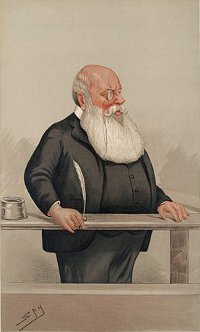In the February 1926 issue of the National Puzzlers’ League publication Enigma, “Remardo” offered this mock-Latin verse:
Justa sibi dama ne
Luci dat eas qua re
Ibi dama id per se
Veret odo thesa me
What does it mean?
In the February 1926 issue of the National Puzzlers’ League publication Enigma, “Remardo” offered this mock-Latin verse:
Justa sibi dama ne
Luci dat eas qua re
Ibi dama id per se
Veret odo thesa me
What does it mean?
A Russian problem from the 1999 Mathematical Olympiad:
Each cell in an 8×8 grid contains an arrow that points up, down, left, or right. There’s an exit at the top edge of the top right square. You begin in the bottom left square. On each turn, you move one square in the direction of the arrow, and then the square you have departed turns 90° clockwise. If you’re not able to move because the edge of the board blocks your path, then you remain on the square and it turns 90° clockwise. Prove that eventually you’ll leave the maze.
From the 2001 Moscow Mathematical Olympiad:
Before you are three piles of stones. One contains 51 stones, one 49 stones, and one 5 stones. On each move you can either combine two piles into one or divide any pile with an even number of stones into two equal piles. Is it possible to end up with 105 piles, each containing a single stone?
On Nov. 25, 1862, Abraham Lincoln sent this dispatch to Gen. Ambrose Burnside at Aquia Creek, Va.:
Can Inn Ale me withe 2 oar our Ann pas Ann me flesh ends NV Corn Inn out with U cud Inn heaven day nest Wed roe Moore Tom darkey hat Greek Why Hawk of abbott Inn B chewed I if.
What did it mean?

In 1887, Irish journalist Richard Pigott sold a series of letters to the Times of London. Purportedly written by Irish Parliamentary Party leader Charles Parnell, they seemed to show that Parnell had approved of a savage political assassination five years earlier. Parnell denounced the letters as a “villainous and bare-faced forgery.”
In the ensuing investigation, Parnell’s attorney asked Pigott to write a series of words and submit them to the court:
livelihood
likelihood
Richard Pigott
proselytism
Patrick Egan
P. Egan
hesitency
What was the point of this?